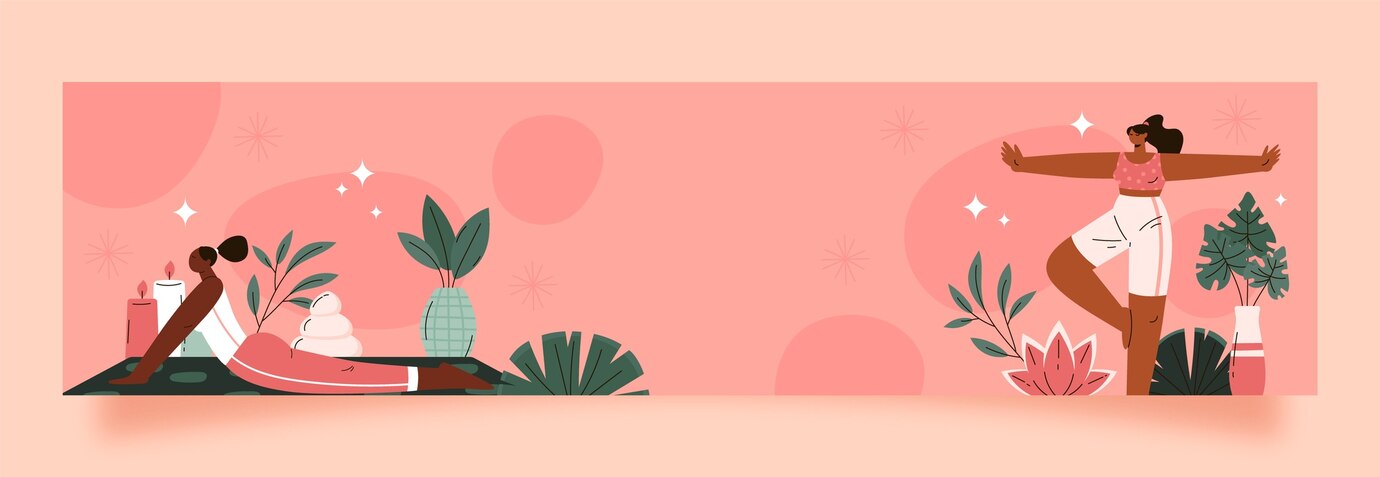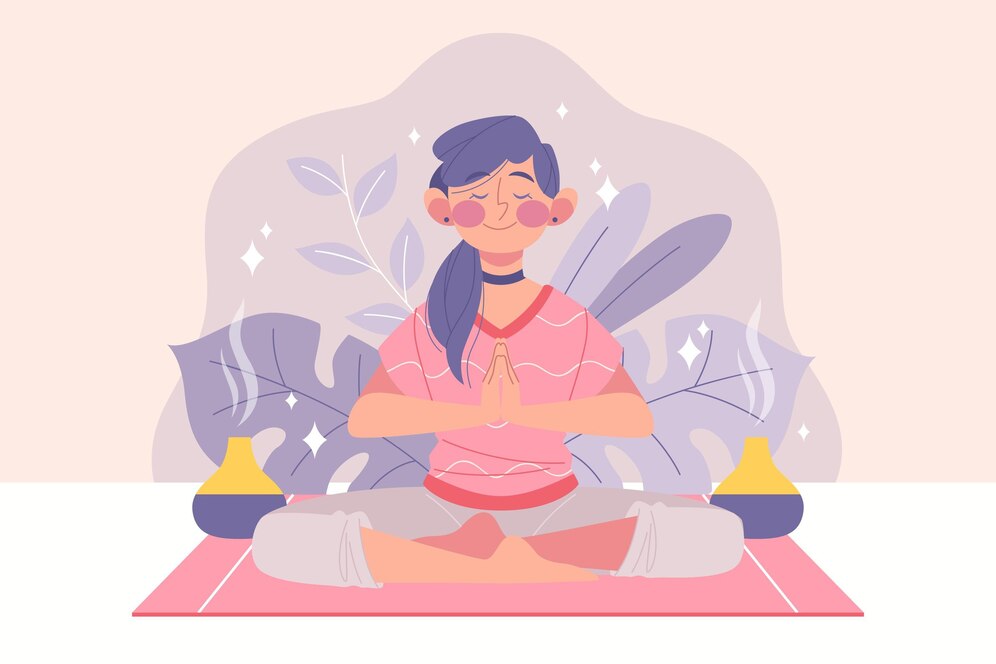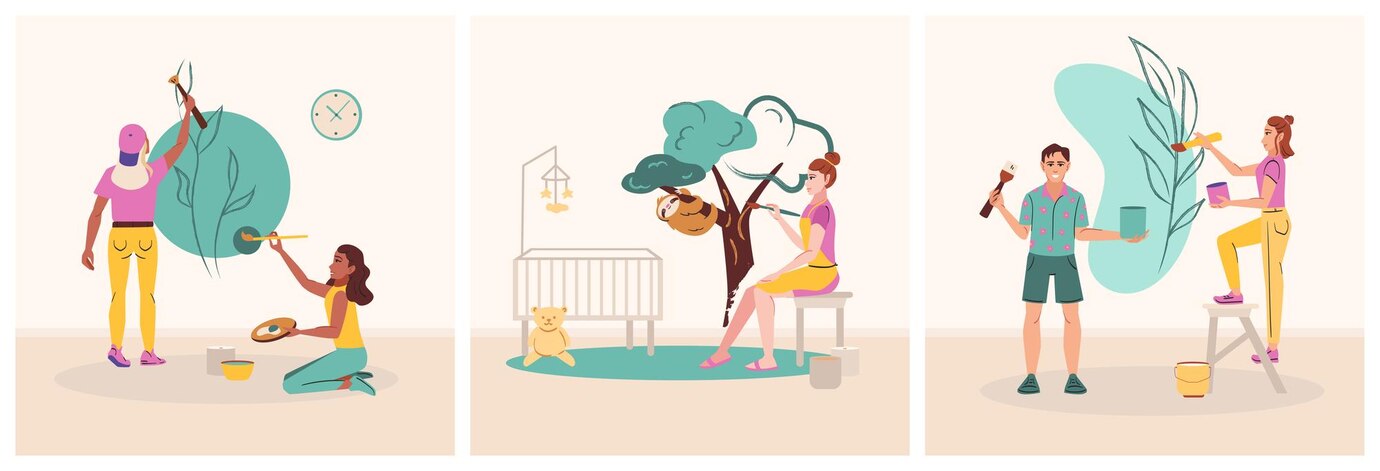In today’s world self-care is often marketed as expensive spa treatments, luxury retreats, and high-end products, it’s easy to believe that nurturing yourself requires emptying your wallet. The global self-care market reached a staggering $450 billion in 2023 and is projected to grow to $680 billion by 2027, according to recent market analyses. But what if I told you that the most effective self-care practices don’t require spending a single penny?
As someone who has navigated financial uncertainty while prioritizing wellbeing, I’ve discovered that authentic self-care has very little to do with consumption and everything to do with connection—to ourselves, to others, and to the world around us. In fact, research published in the Journal of Happiness Studies found that non-material experiences contribute more significantly to long-term wellbeing than material purchases.
In this comprehensive guide, we’ll explore 30 budget-friendly (actually, free!) self-care practices that can transform your physical health, mental wellbeing, emotional balance, and spiritual connection. These practices are accessible to everyone, regardless of financial circumstance, because true self-care should never be a luxury—it’s a necessity we all deserve.
- Understanding True Self-Care: Beyond the Marketing Hype
- Physical Self-Care Practices That Don't Cost a Dime
- Mental Self-Care for Clarity and Focus
- Emotional Self-Care for Balance and Resilience
- Spiritual Self-Care for Meaning and Connection
- Social Self-Care for Connection and Belonging
- Creative Self-Care for Expression and Flow
- Creating Your Sustainable Self-Care Practice
Understanding True Self-Care: Beyond the Marketing Hype
Before diving into our free self-care practices, let’s clarify what self-care actually means. Self-care isn’t just about treating yourself or indulging in temporary pleasures. According to the World Health Organization, self-care encompasses “the ability of individuals, families, and communities to promote health, prevent disease, maintain health, and cope with illness and disability with or without the support of a healthcare provider.”
Self-care is any deliberate action you take to care for your physical, mental, emotional, and spiritual health. It’s about creating sustainable habits that replenish rather than deplete you.
A 2022 survey by the American Psychological Association found that 74% of Americans experienced stress-related symptoms in the previous month, yet only 37% felt they were doing enough to manage their stress. This gap represents not just a personal challenge but a public health concern.
The good news? The most effective stress-management techniques are often completely free.

Physical Self-Care Practices That Don’t Cost a Dime
1. The Power of Progressive Muscle Relaxation
Progressive Muscle Relaxation (PMR) is a technique that involves tensing and then releasing each muscle group in your body. This practice not only relieves physical tension but also has documented benefits for reducing anxiety and improving sleep quality.
A study published in the Journal of Clinical Psychology found that regular PMR practice reduced anxiety symptoms by 48% in participants after just 8 weeks. Here’s how to practice:
- Find a quiet, comfortable place to sit or lie down
- Begin with your facial muscles, tensing them for 5-10 seconds
- Release and notice the relaxation for 15-20 seconds
- Progress systematically through your body—jaw, neck, shoulders, arms, hands, abdomen, buttocks, legs, and feet
- Notice the difference between tension and relaxation
Spending just 10 minutes daily on this practice can significantly reduce chronic muscle tension and stress-related symptoms.
2. Breathwork for Immediate Stress Relief
Your breath is a powerful tool that’s always available to you. Deep breathing activates your parasympathetic nervous system, signaling to your body that it’s safe to relax.
The 4-7-8 breathing technique, developed by Dr. Andrew Weil, has gained particular attention for its efficiency in reducing anxiety. Research from the Journal of Alternative and Complementary Medicine showed that controlled breathing exercises like this one can lower cortisol levels by up to 20% in just a few minutes.
To practice 4-7-8 breathing:
- Inhale quietly through your nose for 4 seconds
- Hold your breath for 7 seconds
- Exhale completely through your mouth for 8 seconds
- Repeat for 4 cycles
This technique can be particularly helpful during high-stress moments or before bed to improve sleep quality.
3. At-Home Workouts Using Your Body Weight
You don’t need an expensive gym membership or equipment to get a quality workout. According to a study in the Journal of Strength and Conditioning Research, bodyweight exercises can be just as effective for building strength and cardiovascular health as machine-based workouts.
A simple circuit might include:
- 1 minute of jumping jacks
- 10 push-ups (modified if needed)
- 15 squats
- 30-second plank
- 15 lunges on each leg
- Repeat 3-5 times
The American Heart Association recommends at least 150 minutes of moderate-intensity exercise per week, which can be broken down into 30-minute sessions five times weekly or even shorter 10-minute sessions throughout the day.
4. Proper Hydration as Self-Care
Staying hydrated is perhaps the most accessible yet overlooked self-care practice. A study in the Journal of Nutrition found that even mild dehydration (1-2% of body weight) can impair cognitive performance, mood, and energy levels.
To make hydration a mindful practice:
- Start your day with a full glass of water before anything else
- Set reminders to drink throughout the day
- Use natural flavor enhancers like sliced cucumber, lemon, or berries
- Monitor your hydration by checking the color of your urine (pale yellow indicates good hydration)
The Institute of Medicine recommends approximately 3.7 liters (125 ounces) daily for men and 2.7 liters (91 ounces) for women, though this includes water from all sources, including food.
5. Sleep Hygiene Optimization
Quality sleep is perhaps the most powerful free health intervention available to us. According to the Centers for Disease Control and Prevention, more than one-third of American adults regularly get less than the recommended 7 hours of sleep, contributing to a host of health problems including weakened immunity, increased inflammation, and impaired cognitive function.
Creating a solid sleep hygiene routine costs nothing:
- Maintain consistent sleep and wake times, even on weekends
- Create a dark, cool sleeping environment
- Avoid screens for at least 30 minutes before bed (blue light suppresses melatonin production)
- Develop a relaxing pre-sleep routine (stretching, reading, or gentle breathing exercises)
- Limit caffeine after noon and alcohol close to bedtime
A study in the journal Sleep Medicine found that participants who implemented these basic sleep hygiene practices experienced a 42% improvement in sleep quality within three weeks.
6. Sun Exposure and Vitamin D
Responsible sun exposure is a completely free way to boost your vitamin D levels, which plays a crucial role in mood regulation, immune function, and bone health. A study published in the Journal of Internal Medicine found that low vitamin D levels were associated with a 14% increase in depression.
For safe sun exposure:
- Aim for 10-30 minutes of midday sun several times per week
- Expose larger areas like arms and legs rather than just face and hands
- Never allow your skin to burn
- Consider your skin type—people with darker skin require more sun exposure to produce the same amount of vitamin D
This simple practice not only boosts vitamin D but also helps regulate your circadian rhythm, improving sleep quality and daytime energy levels.

Mental Self-Care for Clarity and Focus
7. Digital Detox Periods
Our constant connectivity comes at a cost. Research published in the Journal of Social and Clinical Psychology found that limiting social media use to 30 minutes per day led to significant reductions in loneliness and depression over three weeks.
Implementing regular digital detoxes requires no money, just intention:
- Designate specific tech-free hours (during meals, the first hour after waking, or the last hour before bed)
- Create phone-free zones in your home (bedroom, dining area)
- Try a 24-hour technology sabbatical once a month
- Use your phone’s screen time features to set limits on certain apps
Approximately 66% of adults exhibit signs of nomophobia (fear of being without mobile phone access), according to a study in Cyberpsychology, Behavior, and Social Networking. Breaking this dependency can significantly improve mental clarity and presence.
8. Mindfulness Meditation
Mindfulness meditation has moved from fringe practice to mainstream recommendation, backed by thousands of scientific studies. A meta-analysis published in JAMA Internal Medicine found that mindfulness meditation programs showed moderate evidence of improved anxiety, depression, and pain.
To begin a basic mindfulness practice:
- Find a comfortable seated position
- Focus your attention on your breath
- When your mind wanders (which it will), gently bring attention back to your breath
- Start with just 5 minutes daily and gradually increase
The neurological benefits begin with sessions as short as 8 minutes per day, making this one of the most time-efficient mental health interventions available.
9. Cognitive Restructuring Techniques
Our thoughts powerfully influence our feelings and behaviors. Cognitive restructuring—a core component of cognitive-behavioral therapy—involves identifying and challenging unhelpful thought patterns.
According to the American Psychological Association, cognitive restructuring has demonstrated effectiveness for conditions ranging from anxiety and depression to chronic pain and insomnia.
A simple practice:
- Notice when you’re experiencing strong negative emotions
- Identify the thoughts behind those feelings
- Challenge those thoughts: Is this thought factual? Is it helpful? What would I tell a friend thinking this?
- Replace with more balanced, realistic thoughts
This practice can be particularly helpful during times of stress or uncertainty, giving you greater control over your emotional responses.
10. Learning Through Free Resources
Continuous learning promotes neuroplasticity and cognitive reserve, potentially reducing the risk of dementia and cognitive decline. A study in the Journal of Aging and Health found that adults who engaged in mentally stimulating activities had a 30-50% reduced risk of developing dementia.
Free learning resources abound:
- Public libraries (physical and digital collections)
- Educational podcasts and YouTube channels
- Free courses from platforms like Coursera, edX, and Khan Academy
- Language exchange programs
- Community workshops and lectures
Devoting even 15 minutes daily to learning something new creates a powerful mental self-care habit that builds over time.
11. Journaling for Mental Clarity
Expressive writing has been studied extensively since the 1980s, with consistent findings showing its positive impact on both physical and mental health. Research published in the Journal of the American Medical Association found that just 20 minutes of expressive writing three times per week reduced doctor visits and improved both physical and psychological health measures.
Effective journaling approaches:
- Gratitude journaling: List 3-5 things you’re grateful for each day
- Thought download: Write continuously for 10 minutes without editing or judgment
- Problem-solving journaling: Define a problem, explore possibilities, and sketch action steps
- Emotional processing: Identify feelings, their triggers, and patterns you notice
All you need is paper and pen—or even a free notes app on your phone—to access this powerful mental health practice.
12. Organization and Decluttering
The state of our physical environment affects our mental state. A study published in the Personality and Social Psychology Bulletin found that women who described their homes as cluttered had higher levels of cortisol (the stress hormone) throughout the day compared to women who described their homes as restorative.
Free decluttering strategies include:
- The one-in, one-out rule: For every new item that enters your home, one must leave
- The four-box method: Sort items into keep, donate, trash, or relocate categories
- 15-minute daily decluttering sessions
- Digital decluttering of emails, photos, and files
Start with small areas for immediate satisfaction—a single drawer or shelf—and build momentum from there.

Emotional Self-Care for Balance and Resilience
13. Building a Gratitude Practice
Gratitude practice has become popular for good reason: it works. A study in the Journal of Personality and Social Psychology found that participants who kept weekly gratitude journals reported better physical health, optimism, progress toward goals, and stronger connections with others compared to those who recorded neutral or negative events.
Simple gratitude practices:
- Begin or end each day by naming three specific things you’re grateful for
- Write gratitude letters to people who have positively impacted your life (whether you send them or not)
- Create a gratitude jar, adding notes throughout the year
- Practice gratitude walks, mentally noting things you appreciate as you move
Neurologically, gratitude practice activates the brain’s reward pathway and production of dopamine and serotonin, creating a natural antidepressant effect.
14. Emotional Freedom Technique (Tapping)
EFT combines elements of cognitive therapy with acupressure, involving tapping on specific meridian points while focusing on negative emotions or physical sensations. It costs nothing to learn and practice.
A meta-analysis published in the Journal of Nervous and Mental Disease found that EFT demonstrated a significant decrease in anxiety scores even when compared to standard-of-care treatments.
Basic tapping sequence:
- Identify the issue and rate its intensity on a scale of 0-10
- Create a setup statement: “Even though I feel [emotion], I deeply and completely accept myself”
- Tap through the sequence of points: side of hand, top of head, eyebrow, side of eye, under eye, under nose, chin, collarbone, under arm
- Re-rate the intensity and repeat as needed
Many people find that EFT helps process difficult emotions more rapidly than traditional talk-based approaches.
15. Boundary Setting Practice
Setting healthy boundaries is essential emotional self-care. According to clinical psychologist Dr. Nedra Glover Tawwab, poor boundaries are linked to burnout, resentment, and emotional exhaustion.
Creating and maintaining boundaries costs nothing but attention:
- Identify areas where you feel drained, resentful, or overwhelmed
- Clarify what you need and what you’re willing to accept
- Practice direct but kind communication: “I care about you, but I’m not available to help with that right now”
- Start with smaller boundaries before tackling more significant ones
- Notice and address feelings of guilt that may arise
Remember that boundaries are about self-respect, not rejection of others.
16. Self-Compassion Techniques
Self-compassion involves treating yourself with the same kindness you would offer a good friend. Research by Dr. Kristin Neff has shown that self-compassion is more strongly associated with emotional resilience and psychological wellbeing than self-esteem.
One powerful technique is the self-compassion break, which includes three components:
- Mindfulness: “This is a moment of suffering”
- Common humanity: “Suffering is part of life. I’m not alone in this”
- Self-kindness: Place your hands over your heart and offer yourself understanding: “May I be kind to myself in this moment”
A 2019 meta-analysis found that self-compassion interventions led to significant reductions in psychological distress and improvements in wellbeing across diverse populations.
17. Active Listening in Relationships
Quality connections contribute significantly to emotional health. Active listening is a free yet invaluable practice that strengthens relationships while providing emotional support.
Elements of active listening include:
- Giving full attention (putting away devices)
- Using non-verbal cues that show engagement
- Reflecting back what you’ve heard
- Asking open-ended questions rather than immediately sharing your experience
- Resisting the urge to problem-solve unless specifically requested
According to relationship researcher Dr. John Gottman, couples who practice active listening report greater relationship satisfaction and emotional intimacy.
18. Laughter as Medicine
The saying “laughter is the best medicine” has scientific backing. Laughter reduces stress hormones, increases endorphins, and strengthens your immune system. A study in Alternative Therapies in Health and Medicine found that laughter therapy reduced depression and improved sleep quality in older adults.
Free ways to incorporate more laughter:
- Watch comedy shows or funny videos
- Share jokes with friends
- Play silly games with family
- Attend free comedy events in your community
- Practice laughter yoga (intentional laughter exercises)
A good laugh provides both immediate mood elevation and longer-term stress reduction, making it a powerful emotional self-care tool.

Spiritual Self-Care for Meaning and Connection
19. Nature Immersion Practices
Spending time in nature has profound effects on wellbeing. The Japanese practice of shinrin-yoku (forest bathing) has been extensively studied, with research showing it reduces cortisol levels, blood pressure, and symptoms of anxiety and depression.
Free nature connection practices:
- Mindful walks in local parks or green spaces
- Watching sunrise or sunset
- Cloud or star gazing
- Gardening (even with just a few pots)
- Barefoot walking on grass or sand
A study published in Scientific Reports found that spending just 120 minutes in nature per week was associated with significantly better health and wellbeing compared to no nature exposure.
20. Value Clarification Exercises
Connecting with your core values provides direction and meaning. Research in the Journal of Personality and Social Psychology found that value clarification exercises increased resilience during stressful periods and improved overall life satisfaction.
A simple values clarification exercise:
- Reflect on peak positive experiences in your life
- Identify what made these moments meaningful
- Look for patterns across these experiences
- Distill these into 3-5 core values
- Consider how you can align daily activities with these values
This practice helps ensure your energy flows toward what genuinely matters to you rather than what others expect.
21. Volunteer Your Time and Skills
Helping others benefits the giver as much as the receiver. A meta-analysis of volunteering studies published in BMC Public Health found that volunteering was associated with reduced depression, increased life satisfaction, and even lower mortality rates.
Find no-cost ways to contribute:
- Virtual volunteering opportunities
- Neighborhood cleanup events
- Skill-sharing in your community
- Checking in on elderly neighbors
- Mentoring someone in your field
Even small acts of service release oxytocin and activate pleasure centers in the brain, creating what researchers call a “helper’s high.”
22. Creating Personal Rituals
Rituals give structure and meaning to our days. Unlike routines, which are primarily functional, rituals have symbolic significance. Research published in the Journal of Experimental Psychology found that personal rituals increased feelings of control and reduced anxiety during challenging transitions.
Free ritual ideas:
- Morning intention-setting
- Evening gratitude practice
- Full moon or new moon reflections
- Seasonal celebration rituals
- Transition rituals between work and home life
These practices create meaningful pauses in our often rushed lives, allowing for presence and reflection.
23. Cultivating Awe Experiences
Awe—the feeling of being in the presence of something vast that transcends our understanding—is a powerful emotional state linked to numerous health benefits. Research at UC Berkeley found that awe experiences decreased inflammation markers, improved immune function, and increased prosocial behaviors.
Free ways to experience awe:
- Stargazing
- Watching powerful weather events (safely)
- Viewing awe-inspiring online videos
- Listening to moving music
- Contemplating profound ideas or concepts
Neuroscience researcher Dacher Keltner found that the average person experiences about 2.5 awe experiences per week, but we can intentionally create more opportunities for this powerful emotion.

Social Self-Care for Connection and Belonging
24. Deep Conversation Practices
While casual social media interactions provide little psychological benefit, meaningful conversations significantly impact wellbeing. Research from the University of Arizona found that people who had more substantive conversations reported greater happiness and life satisfaction.
Free practices for deeper connection:
- Use conversation starter questions that go beyond small talk
- Practice “question stacking” (following up on responses with deeper questions)
- Share your authentic experiences rather than polished presentations
- Create regular check-ins with close friends
- Try “walking and talking” to make conversation more fluid
According to psychologist Dr. Shasta Nelson, consistency is more important than duration for building meaningful relationships.
25. Letter Writing
In our digital age, handwritten letters have become rare, making them especially meaningful. Writing letters costs nothing but time and can create profound connection.
Types of letters to consider:
- Gratitude letters to mentors or supporters
- Love letters to partners or family members
- Letters of encouragement to friends facing challenges
- “Future self” letters for personal reflection
- Legacy letters sharing wisdom with younger generations
Research from Kent State University found that expressive writing in letter form reduced rumination and depression symptoms more effectively than journaling for oneself.
26. Community Engagement
Finding ways to participate in your local community builds social capital—the network of relationships that provide support and belonging. A study in the American Journal of Public Health found that social capital was associated with better self-reported health across socioeconomic groups.
Free community engagement ideas:
- Attend community meetings or forums
- Participate in local clean-up events
- Join free skill-sharing groups
- Attend library events or reading groups
- Participate in community gardens
These activities not only expand your social network but also increase your sense of belonging and community investment.
27. Active Listening Circles
Creating intentional spaces for deeper listening cultivates empathy and connection. In an active listening circle, participants take turns speaking while others listen without interruption, judgment, or planning responses.
How to organize a listening circle:
- Invite 3-8 people to participate
- Choose a theme or question for discussion
- Set clear guidelines: no interrupting, no advice-giving unless requested
- Use a talking object to indicate whose turn it is to speak
- End with a round of appreciation or reflection
A study published in the Journal of Applied Communication Research found that structured listening exercises significantly improved relationship quality and emotional intimacy between participants.

Creative Self-Care for Expression and Flow
28. Free-Writing or Poetry
Creative writing provides an outlet for processing emotions while engaging our imaginative capacities. Research published in the Journal of Poetry Therapy found that expressive writing improved mood and decreased anxiety in participants experiencing stress.
Accessible writing practices:
- Morning pages: Three pages of stream-of-consciousness writing upon waking
- Five-minute poetry: Set a timer and write without editing
- Found poetry: Collecting and rearranging words from existing texts
- Haiku or other structured forms that encourage concision
- Letter writing to your past or future self
The key is writing without judgment—focusing on the process rather than the product.
29. Movement as Creative Expression
Dance and expressive movement are available to everyone, regardless of training or physical condition. A study in The Arts in Psychotherapy found that even brief dance/movement sessions improved mood and body image in participants.
Free movement practices:
- Dancing alone to favorite music
- Movement improvisation responding to different music genres
- Creating a movement “sentence” that expresses your current emotional state
- Tension and release explorations
- “Shaking” practices to release physical and emotional tension
These practices reconnect us with our bodies as instruments of expression rather than objects to be evaluated.
30. Voice and Sound Exploration
Using your voice for self-expression costs nothing and can be profoundly releasing. Research published in the Journal of Voice found that vocal exercises reduced stress hormones and improved immune function in regular practitioners.
Free vocal practices:
- Humming or toning single notes
- Simple chanting or mantras
- Sound improvisation responding to emotions
- Singing favorite songs
- Reading poetry or meaningful texts aloud
Sound practices can be particularly powerful for releasing emotions stored in the body and regulating the nervous system.
Creating Your Sustainable Self-Care Practice
With these 30 free self-care ideas, you now have a comprehensive toolkit for nurturing yourself without financial investment. The key to success lies not in implementing all of these at once, but in creating a sustainable practice that works for your unique life.
Consider starting with just one practice from each category—physical, mental, emotional, spiritual, social, and creative—and implementing them consistently for two weeks before adding more. Research on habit formation from University College London found that it takes an average of 66 days for a new behavior to become automatic, so patience and consistency are essential.
Remember that self-care is not selfish—it’s necessary. As the research consistently shows, when we nurture ourselves effectively, we have more to give to others and the world around us. By replacing costly self-care products with these evidence-based practices, you’re not just saving money—you’re investing in deeper wellbeing that no product can provide.
What free self-care practice will you implement today?


